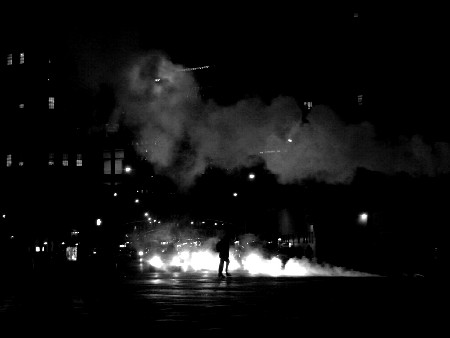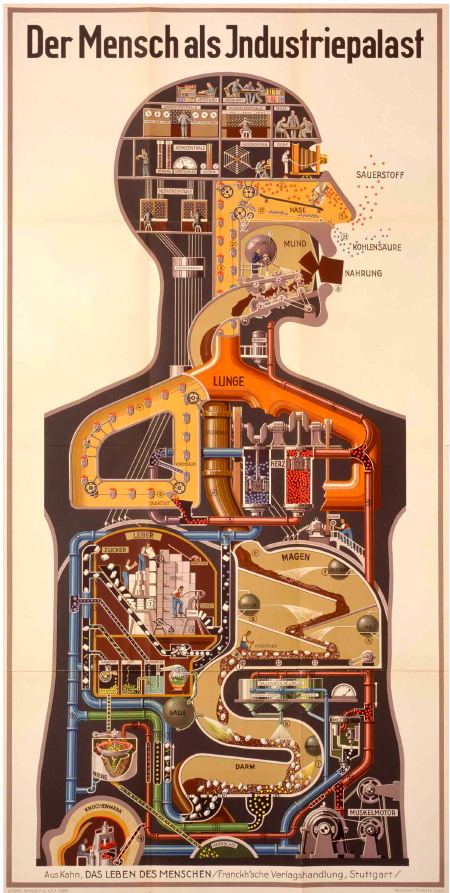The evil within is worse than that without
For awhile I thought the inferences I had been drawing – of an unevenly distributed but nonetheless disastrous collapse of democratic institutions, from the precarization of labour to the corporatization of the university – were in part the afterglow of reading deep into the analyses and experiences of all-out totalitarianism. I had just completed Harrison Salisbury’s The 900 Days: The Siege of Leningrad, which had me imagining not only the horrors of war, but the horrors of a paranoid dictatorship seemingly incapable of recognising the danger in its midst, caught instead in a ceaseless and senseless purge of its own people…
The siege of Leningrad, which killed some 1.5 million through forced starvation alone, could not only have been avoided if Stalin had acted upon the early warning signs of Germany’s treachery, but was further compounded by Stalin’s paranoia, which froze independent thought and action among his generals and armed forces, paralyzing the defence of the Soviet Union from the Nazi blitzkrieg. Besides the fact that Stalin failed to heed the many reports and indications that Nazi Germany was amassing an army ready to annihilate the Soviet Union, the Kremlin politics of Stalin and his right-hand man Police Chief Beria ensured that the many who valiantly defended Leningrad, from the upper military echelons to the lower, as well as the many who sought to memorialize its tragedy, from artists to playwrights, from officers to museum directors and staff, were purged from within while the city was laid waste from without…
For years I have been reading William L. Shirer on the rise and fall of the Third Reich. Seven years ago nearly to the month, I began conducting historical studies on the topic, writing of some of it briefly in this post and here. Much has changed. At the time the figures involved were media supercaricatures, with the terrorist-fighting superduo of Bush and Blair paired up neatly against the evil outlaws, the mysteriously invisible Bin Laden and the poster-boy of evil, Saddam Hussein. These supercaricatures rendered cartoon-like the embodied power of the sovereign even as their power operated, like classic Roadrunner cartoons of seemingly innocuous violence, through the politics of fear. To this end Massumi and Dean’s analyses of Reagan, the actor-president, the fiction of sovereignty – as the “Last Emperor” – proved uncanny and useful.
Each supercaricature had its trading-card qualities. Bush seemed so incredibly inept, so affable and stupid, that the violence of his gesture and the menace of his speech were all the more amplified. Bin Laden, gentle and effeminate, articulate and seemingly intelligent, was all the more horrific for he had successfully used his wealth to spawn a terrorist network that would live on even if he, as the head, was decapitated. Hussein was the most pitiful of them all. Dressed in the trappings of his ornamental uniform and adorned with the dictatorial moustache, Hussein the egoist tyrant seemingly never understood what he had done to upset his friends the United States, whom had previously supported his regime in the war against Iran. When Hussein was pulled from his hiding hole like a rat from the sewers, he had become a cartoon of power, and a convenient bogeyman for the noose.
The mad, mad multitude
Now it is not the supercaricature that rules the day. Rather, it is the undefined, faceless mass, the screaming, nonsensical, overabundance of flesh that weighs among the shouting many, the madding crowd, gun-toting, SUV-driving, flag-waving patriots, mouth agape, eyes angry and yet — so vacant, so devoid of worldliness. We are indeed witnessing the clash of the uncivilizations, whether it be a crowd of clerics screaming for the stoning of a women accused of dishonour because she was raped, or the mad yelling and gun-brandishing of Tea Partiers demanding that income tax be rescinded so that they can… so they can what exactly?









 RT
RT 